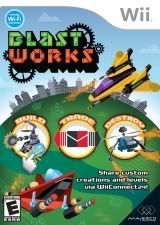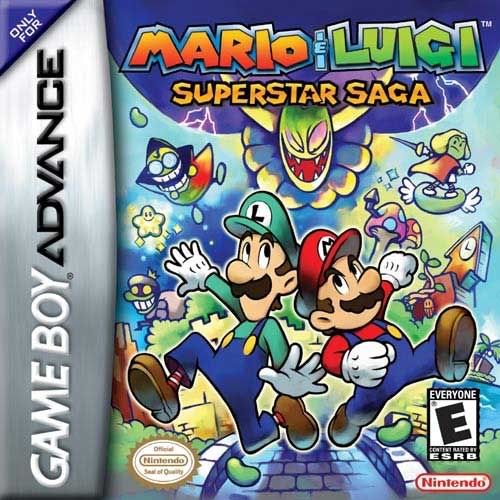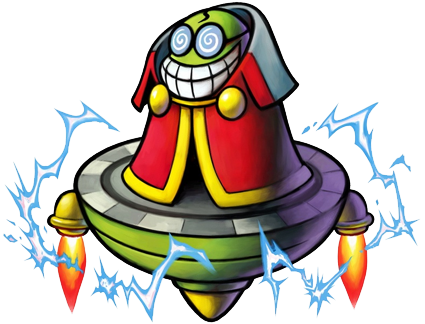As we reach the upper echelons of the 100 Games, we are starting to pass from "games that were pretty great" into "classics". Right now it's a bit of a hazy zone between the two categories.
Five different games from five different systems are the stars of today's installment. And yes, all five systems are from Nintendo. Again, though, a fair mix of the known and the unknown here, plus the highest-rated licensed game!
 35: Lego Star Wars II
35: Lego Star Wars IISystem: GameCube
Genre: 3D Platformer
Developer: Travellers' Tales
Publisher: LucasArts
Released: September 12, 2006
I never expected anything from this game. My brother rented it from Blockbuster and I watched a little. Eventually, with his cajoling, I joined in as Player 2, mostly sticking to R2-D2 and farting around while he did most of the work.
But I was enjoying myself.
It wasn't long before I began playing for real, and not long after that before I started playing it by myself. There were a ton of playable characters, the stages were fun and accessible, the cutscenes were funny, the graphics were nice... it was everything I would never expect in a licensed game. After we returned the rental, I bought both this game and the first one on my next game shopping trip (First one's nice but not as good as the second game). That Lego Star Wars II is my favorite licensed game is even more baffling when you take into account that I've never watched a single Star Wars film or had anything to do with the series at all beyond owning a Stormtrooper figure when I was a kid (that has since been lost).
...Fuck, now I kinda wanna play it again.
 34: Blast Works: Build, Trade, Destroy
34: Blast Works: Build, Trade, DestroySystem: Nintendo Wii
Genre: Shmup
Developer: Budcat
Publisher: Majesco
Released: June 10, 2008
People complained that nothing cool or interesting came out on the Wii that wasn't made by Nintendo themselves. Sure it did, it's just nobody freaking bought it. Deadly Creatures is one example I've already covered, and Blast Works is another (there's a third, the highest-rated "obscure" game, still to come).
Blast Works features a very interesting take on the shmup - defeated enemies can be grabbed by your ship. Once grabbed, the enemies will not only act as armor for your ship, but they will continuously shoot their weapon, enhancing your firepower. Play it right and you'll have a massive katamari of destruction slaughtering enemies before they know what hit them.
While that's cool, the real meat of Blast Works is the creation mode - it's got all the tools and features you need to make your own shmup. With time and creativity, you can make something magical. Both horizontal and vertical shmups are supported, and you can design playable ships, enemies, attack patterns, multi-phase bosses, and background objects. You can also select whether to use the enemy-grabbing gimmick or not.
The community was small but dedicated, and their work remains up on the Blast Works Depot, which allows for uploading and downloading of created objects, levels, ships, and bullet patterns.
 33: Kirby Super Star Ultra
33: Kirby Super Star UltraSystem: Nintendo DS
Genre: Platformer
Developer: HAL Laboratory
Publisher: Nintendo
Released: September 22, 2008
Another freaking Kirby game?! Well, this is the last one. Super Star seems to be generally accepted as the most popular and successful Kirby adventure, and it's a stance I agree with. Super Star solidified the more action-oriented, high-paced (but still low-difficulty) half of the series while Dreamland 3 and Crystal Shards carved out the slower, puzzle-heavy half of the series. Ultimately it seems Sakurai and the action have won out, as there hasn't been a Kirby game like Dreamland 3 since Crystal Shards.
Super Star's main draw is that instead of being one short game (like most Kirby adventures), it's a bunch of really short games, each with a different gimmick, plus some minigames. Here's the games and their gimmicks: You got Spring Breeze (a partial remake of the original Kirby game, Dreamland 1), Dyna Blade (overworld map screen), The Great Cave Offensive (treasure hunting takes precedence over getting to the goal), Revenge of Meta Knight (A harder adventure with a focus on time), and Milky Way Wishes (Kirby starts with no powers and can't get them from enemies - he must unlock them). Also included are a few minigames, most notably Gourmet Race, an eat-and-run one-on-one against King Dedede that is the source of what is probably the most famous Kirby music ever.
This DS remake added several more games to the pot - Revenge of the King is the bonus mode from Dreamland 1 (so it's a much harder Spring Breeze). There's also a lengthy adventure where you play as Meta Knight and blast through most of the other worlds as quickly as possible. The final challenge of the SNES version, The Arena, is complimented with two more boss rushes - one where you play as the partner characters and one where you face the new bosses of the remake.
Aside from all these games, I also like the partner feature, which lets the AI or a second player join Kirby (or Meta Knight). There's no shortage of game here, and it's a great way to get into the Kirby series. Highly recommended.
 32: Wario Land II
32: Wario Land IISystem: Game Boy
Genre: Platformer
Developer: Nintendo
Publisher: Nintendo
Released: March 2, 1998
This one took me by surprise. I played Wario Land II for the first time just a few years ago after seeing it for sale at GameStop, which was still selling Game Boy and Game Boy Color games right up until the late 2000s. I managed to get two awesome new Game Boy games (and the neat Kirby's Dreamland 1) into my tiny Game Boy collection this way. One of them is this here Wario game, with the other coming up later.
In Wario Land II, Wario is invincible. Now you might be wondering how on earth a platformer with an invincible main character would work. The answer is that the game's emphasis is on puzzle-solving, exploring, and finding treasure. Also, it's important to hoard as many coins as possible, and if Wario is hit by an enemy he will lose some coins.
The reason Wario's on this quest is because Captain Syrup the pirate has stolen Wario's stuff, and he wants it back. Simple enough. There's a whole mess of levels to journey through and treasures to find, plus branching paths and alternate endings. As an example, in the first level, you need to press a button to make Wario wake up. But if you don't press anything, Wario will keep sleeping. And then, after waiting long enough, the Level Clear theme plays and you get a set of secret levels. It's pretty great.
Wario Land II was recently released on the 3DS Virtual Console, if you're interested.
 31: Mario and Luigi: Superstar Saga
31: Mario and Luigi: Superstar SagaSystem: Game Boy Advance
Genre: RPG
Developer: AlphaDream
Publisher: Nintendo
Released: November 17, 2003
The Mario world translates itself very well to RPGs, it seems. This is the first (but by no means the only) Mario RPG to make the list. Superstar Saga features Mario and Luigi working together to save both the Mushroom Kingdom and the neighboring Beanbean Kingdom from Cackletta, a nasty witch with an extremely popular lackey, the Engrish-spewing Fawful. Also making appearances are the sneaky thief Popple, the androgynous Prince Peasley, and Bowser in all his glory.
Like Paper Mario, Mario and Luigi focuses on timed button presses to achieve victory in combat. Here, though, rather than just defending yourself, action commands will dodge attacks entirely - and since both Mario and Luigi die in just a few hits, you need to do a lot of dodging. Also like Paper Mario, the game is loaded with quirky humor and nods to other Mario games.
I really liked the creative use of the bros' abilities. Mario and Luigi have to work together to navigate the games' mazelike dungeons using high jumps, spin jumps, smashing each other with hammers, splitting up, Mario being used as a fire hose, and Luigi being used as a surfboard, among other things. You really have to trust a man to let him hit you with a hammer so hard you're buried underground.


No comments:
Post a Comment